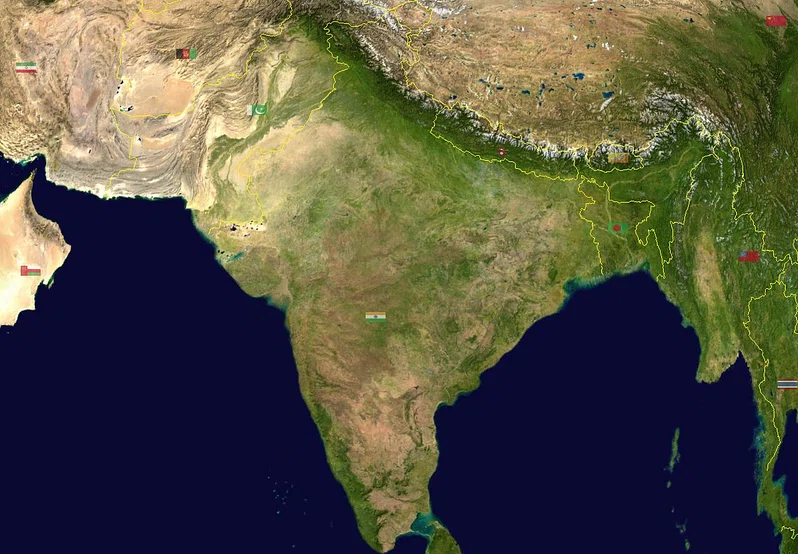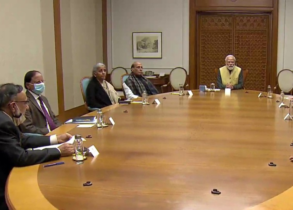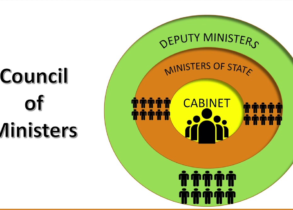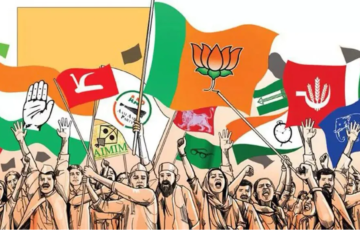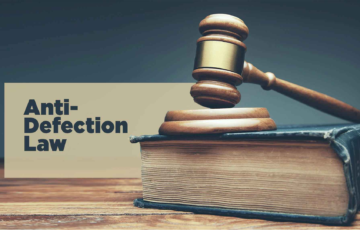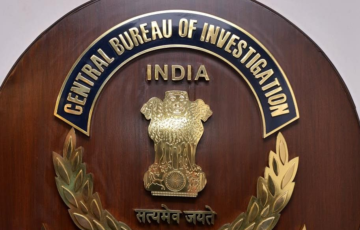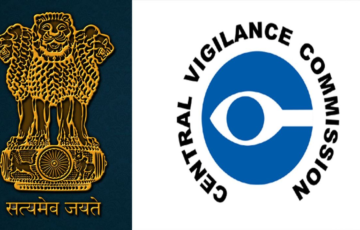CHIEF MINISTER
Introduction
- The Chief Minister in a state is similar to the Prime Minister at the central level, as both are heads of the executive branch responsible for administration and governance in their respective jurisdictions. The Chief Minister is appointed by the Governor of the state, who represents the President of India and has various powers and duties as per the Indian Constitution. Article 164 of the Constitution deals with the appointment of the Chief Minister and the Council of Ministers in states, outlining qualifications and disqualifications.
- The Chief Minister is typically chosen from among the leaders of the political party or coalition with the most seats in the state legislative assembly, forming the government and forming the Chief Minister. This is a fundamental principle of parliamentary democracy. While the Chief Minister is responsible for day-to-day governance, there is also a Council of Ministers who assist the Chief Minister in various aspects of governance. The Chief Minister and the Council of Ministers are collectively accountable to the state legislature and the people of the state. This process is part of India’s federal structure, where powers and responsibilities are divided between the central and state governments.
Appointment of Chief Minister
- The Governor appoints the leader of the largest party in the state legislative assembly or the leader chosen by the largest coalition to become the Chief Minister.
- If no party or coalition has a clear majority, the Governor may use situational discretion. In such cases, they may appoint a leader as Chief Minister who can demonstrate a majority on the floor of the state legislative assembly.
- Succession in the Absence of a Chief Minister: If the Chief Minister dies without a successor already named, the Governor has the discretion to pick a successor. However, if the ruling party nominates a specific individual as the successor, the Governor is generally obligated to appoint that person.
- Membership in the Legislative Assembly: If the Chief Minister does not become a member of either house of the state legislature within six months, they may lose their position as Chief Minister. The Governor appoints the Chief Minister, but they cannot dismiss the Chief Minister until the Chief Minister has a majority in the state legislative assembly.
- Post-Election Process: After a general election for the State Legislative Assembly, the party or coalition that obtains a majority in the assembly elects its leader and notifies the Governor. The Governor then appoints the leader as the Chief Minister and instructs them to form a Council of Ministers.
- Lack of Clear Majority: When the State Legislative Assembly lacks a clear majority, the Governor often approaches the leader of the single largest party to form a government. This leader is typically given the first opportunity to demonstrate their ability to secure a majority.
- These procedures are in line with India’s federal and parliamentary system, where the Governor, as the constitutional head of the state, plays a crucial role in the formation and maintenance of state governments. The principle of democratic representation and the ability to prove a majority in the legislative assembly are key factors in the selection and continuation of a Chief Minister’s tenure.
Oath, Term and Salary
| Oath | The Governor administers the oath of office to the Chief Minister before the Chief Minister assumes office. In this oath, the Chief Minister swears to:
· Bear true faith and allegiance to the Constitution of India. · Uphold India’s sovereignty and integrity. · Faithfully and conscientiously discharge the duties of the office of Chief Minister. · Do right to all manner of people in accordance with the Constitution and the law, without fear or favor, affection or ill will. The Chief Minister also takes an oath of secrecy, in which they pledge not to directly or indirectly communicate or reveal to any person(s) any matter that is brought before them or becomes known to them as a state minister, except as may be required for the proper discharge of their duties as such minister. |
| Term | · The Chief Minister’s term is not fixed, and he serves at the pleasure of the governor.
· He can’t be dismissed by the governor as long as he has the support of the legislature’s majority. · He can be removed from office if the State Legislative Assembly passes a vote of no confidence in him. |
| Salary | · The state legislature determines the Chief Minister’s salary and allowances.
· In addition to his salary and allowances, he receives a sumptuary allowance, free accommodation, a travel allowance, medical facilities, and so on. |
Power and Functions of Chief Minister
- Appointment of Ministers: The Governor appoints ministers who have been proposed by the Chief Minister. In a parliamentary system like India’s, the Chief Minister is the leader of the majority party or coalition and is responsible for selecting individuals to serve as ministers in the council of ministers.
- Ministerial Portfolios: The Governor has the authority to reassign and reshuffle ministerial portfolios. However, this is typically done on the advice of the Chief Minister, who is responsible for managing and organizing the council of ministers.
- Dissolution of Council of Ministers: Because the Chief Minister is the head of the council of ministers, they can bring the council of ministers to an end by resigning. The resignation of the Chief Minister often leads to the dissolution of the entire council of ministers.
- Liaison between Governor and Council of Ministers: As per the provisions outlined in Article 167 of the Indian Constitution, the Chief Minister serves as a liaison between the Governor and the state council of ministers. This involves communication between the executive head of the state (the Governor) and the elected representatives (the council of ministers).
- Recommendations on Key Appointments: The Chief Minister advises the Governor on the appointment of significant authorities, including the Advocate General, Chairman and members of the State Public Service Commission, and members of the State Election Commission. This advisory role reflects the Chief Minister’s influence and involvement in important state appointments.
- Recommendation of Legislative Assembly Dissolution: The Chief Minister has the authority to recommend the dissolution of the legislative assembly to the Governor. The Governor can act on this recommendation and dissolve the assembly, leading to the need for new elections.
Other Functions
- Chairman of the State Planning Board: The Chief Minister often serves as the Chairman of the State Planning Board. The State Planning Board is responsible for formulating and overseeing the state’s development plans and policies.
- Vice-Chairman of Zonal Council: The Chief Minister, by rotation, serves as the Vice-Chairman of the concerned zonal council for a one-year term. Zonal councils facilitate cooperative efforts and coordination between states in specific geographic zones.
- Member of National Councils: The Chief Minister is a member of both the Prime Minister’s Inter-State Council and the NITI Aayog Governing Council. These national councils provide a platform for cooperation and policy coordination between the central government and the states.
- State Government’s Chief Spokesperson: The Chief Minister often serves as the state government’s chief spokesperson. They are responsible for conveying the government’s policies, decisions, and initiatives to the public and the media.
- Chief Crisis Management: In times of crisis, the Chief Minister serves as the chief crisis manager at the political level. This includes managing and coordinating responses to various crises, whether they are natural disasters, public health emergencies, or other critical situations.
- Interaction with Diverse Groups: As the state’s leader, the Chief Minister interacts with diverse groups of people and receives memoranda from them about their difficulties and concerns. This reflects the Chief Minister’s role as a representative and advocate for the state’s citizens.
- Political Leader of Services: The Chief Minister is often considered the political leader of the state’s administrative services. They play a crucial role in ensuring the effective functioning of the state’s bureaucracy.
- Policy Announcements in the Legislative Assembly: The Chief Minister announces all of the state government’s policies and initiatives on the floor of the state’s legislative assembly. This is a significant aspect of their role as the head of the council of ministers.
Significance
- Paramount Position: The Chief Minister holds a paramount position in the state’s governmental system. As the head of the council of ministers, they are the chief executive of the state and play a central role in its administration.
- Majority in the State Legislature: The effectiveness of the Chief Minister’s position is often contingent on their party having a clear majority in the State Legislature. A clear majority enables the Chief Minister to govern with greater authority and implement their agenda more easily.
- Challenges in Coalition Government: In a coalition government, where multiple parties come together to form the government, upholding the principle of collective responsibility can be more challenging. The Chief Minister may need to invest time and effort into maintaining unity and discipline within the coalition.
- Primary Spokesperson: The Chief Minister serves as the primary spokesperson for the state government. They are responsible for communicating government policies and decisions to the public through the media.
- Regular Press Conferences: Holding regular or periodic press conferences is a common practice for Chief Ministers. These press conferences serve as a platform for the Chief Minister to inform the citizens of the state about the government’s activities and performance.
- The role of a Chief Minister is dynamic and demanding, involving both leadership and management skills. They are responsible for not only running the government efficiently but also for maintaining political stability and ensuring that the government’s actions and policies align with the interests of the state’s citizens.
Important Articles Related with Chief Minister
- Article 163: This article states that the Council of Ministers, with the Chief Minister at the head, shall aid and advise the Governor in the exercise of his/her functions, except in so far as he/she is by or under the Constitution required to exercise his/her functions or any of them in his/her discretion.
- Article 166: This article states that all executive actions of the Governor of a State shall be expressed to be taken in the name of the Governor.
- Article 167: This article states that the Chief Minister shall be the head of the Council of Ministers and shall be in charge of the general administration of the State.
- Article 168: This article states that the other ministers shall be assigned such portfolios as the Chief Minister may think fit.
- Article 169: This article states that the Council of Ministers shall meet at least once a week.

